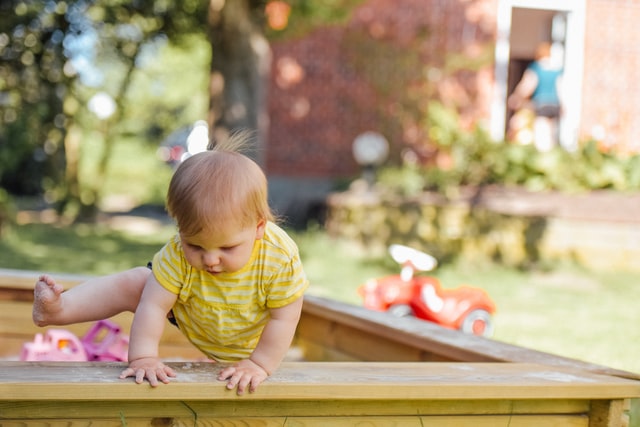Are you confident that your living space is safe for kids? What if you missed something crucial?
When the University of Alabama at Birmingham (UAB) asked first-time mums to identify potential hazards in a model home, participants recognized fewer than half of them. It pays to be prepared, as household injuries are among the leading causes of hospital visits among UK residents aged five and younger.

The good news is that making your home safe for toddlers is easier than it seems. You just need to know where to look. Following is a room-by-room list of the key considerations.
Lounge
1. Anchor the television to prevent it from falling. If your TV is on a stand, check if it can be mounted instead.
2. Ensure that candles and matches are out of reach. The former can be replaced by flameless LED lights.
3. Attach framed photos to the wall or substitute glass covers with plastic.
4. Install heat-resistant gates by your fireplace and remove any small rocks that are typically found in artificial units.
5. Buy power strip covers or use heavy furniture to conceal electrical components.
6. Place edge guards around glass tables. This is especially important for non-tempered glass that shatters easily.
Kitchen
7. Make the kitchen off-limits when you aren’t around by installing a gate.
8. Lock lower cabinets or move dangerous products (chemicals and cleaners) to unreachable storage areas.
9. Remove cutlery and crockery from the dishwasher after use and enable the lock setting or purchase an appliance lock.
10. Keep the microwave out of reach. It’s also wise to remove stove knobs or use a stove guard when you’re not cooking.
11. Conceal loose cords and surge protectors. You can find the necessary products at powerpointelectrics.co.uk.
12. Install a latch on the fridge, which often contains various choking hazards.
Bedroom
13. Be wary of stuffed animals that pose a suffocation risk.
14. Check to see if window guards are required. For casement windows, you can simply remove the crank.
15. Cut window blind cords or ensure that they’re otherwise out of reach.
16. Keep an eye on stationery that’s small enough to choke on, such as erasers and broken crayons.
17. Anchor any heavy furniture, namely desks and dressers, to the floor or wall to prevent tip-overs.
18. Carefully examine the bedroom for any additional dangers. This can include choking hazards like latex balloons and coins inside porcelain piggy banks, which are best kept out of reach.
Bathroom
19. Protect against bangs and bruises by placing rubber covers over taps and faucet components.
20. Avoid lining bins and baskets with plastic packets.
21. Prevent doors from shutting on little fingers. It can be as simple as draping a towel over the top.
22. Immediately wipe and mop up any puddles after baths.
23. Keep the toilet seat lid down or install a latch to reduce drowning risks.
Conclusion
As with every space, don’t forget to address any choking or electrical hazards. Your home (and toddler) will be far safer once these steps are covered.
